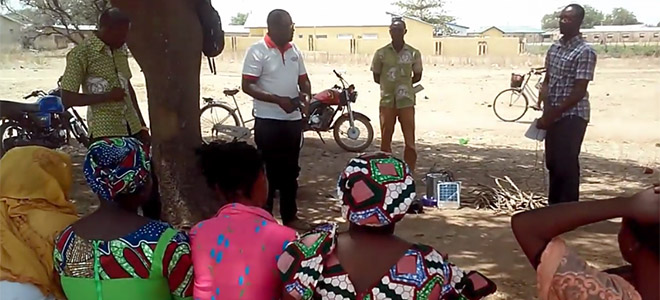News
Want to Buy a New Stove?
by Katie Dickinson
March 23, 2017

Think for a moment about the last meal you cooked. What kind of stove (or stoves) did you use? A gas range? An electric oven? A charcoal grill? A microwave? Maybe you even used an outdoor campfire.
For most of you reading this, the technologies you used to cook your last meal were probably fairly clean. Meeting your daily cooking needs does not expose you to harmful levels of household air pollution. But for nearly half of the world’s population, cooking and smoke exposure go hand in hand. Nearly three billion people worldwide rely on stoves that burn biomass, like wood and charcoal. Not eating is not an option, but exposure to household air pollution linked to these cooking practices can be deadly: nearly 4 million people die prematurely from diseases linked to smoke from cooking.
Looking at the problem from this angle, it’s difficult to understand why people would choose to continue to cook over open fires and other polluting biomass stoves. But a little more reflection might remind you that changing behavior and adopting new practices is hard for all of us, for a multitude of reasons, and that many potential barriers exist to spreading the adoption of even the most promising new practices and technologies. Continue reading ...
What's Cooking in Ghana?
CIRES News
December 29, 2016
Close to half the world’s population cooks over an open fire every day. That’s hard on human health—people cooking over an open fire breathe in smoke and gases that can damage their lungs. Burning biomass is also bad for the environment, contributing to poor air quality and the production of black carbon, as well as deforestation. Making the transition to cleaner cooking practices is a process that intrigues Katie Dickinson, a research scientist with CIRES and the Center for Science and Technology Policy Research at CU Boulder, and a project scientist at the National Center for Atmospheric Research. Part of Dickinson’s work explores how people in the developing world make this shift, and she’s spent the past few years traveling back and forth to West Africa, to study the use of cookstoves in northern Ghana.
The question of what drives human behavior is one of the basic questions at the center of Dickinson’s research. “Our first project, which was from 2013 to 2016, studied 200 households in rural northern Ghana,” says Dickinson. “We gave them two different types of cookstoves and analyzed how much they liked them, and used them, and whether they prefered them to traditional cooking methods.” They found that while the participants liked the stoves and used them regularly, lowering exposure to some pollutants, most of the households also continued to cook over open fires. But their research does suggest that people in developing nations could see benefits to their health by using these improved cooking stoves. “Now,” says Dickinson, “What we want to do is see what some of the barriers are to adoption of these stoves.” Continue reading ...
Prices, Peers and Perceptions: Studying a Community's Adoption of Cleaner Cookware
by Alison Gilchrist, CSTPR Writing Intern
December 6, 2016

Three billion people, a little over half the world's population, cook over open fires every day. Those of us with access to microwaves, toasters, rice cookers and waffle irons might not be able to truly grasp what that means for the health of people doing the cooking without such appliances, let alone what it means for the environment to be burning so much solid fuel.
The World Health Organization (WHO) estimates that the exposure to smoke from cooking is responsible for about four million premature deaths a year. Much of the health burden of open fire cooking falls on the women and children, who are in the house while food is being prepared. There are also serious environmental effects, both on the regional scale (poor air quality) and on a much larger scale (the production of black carbon, a serious contributor to climate change). Moreover, the reliance on renewable fuels means greater deforestation in regions where open fires are primarily used for cooking.
Katie Dickinson, a Research Scientist with the CIRES Center for Science and Technology Policy Research (CSTPR), studies how this situation could be improved by a shift to cleaner cooking.
"There are a lot of different options out there," she says "An open fire isn’t the only way to cook, there are a lot of technological alternatives. But it turns out that finding a technology that works, that is appropriate for a particular culture and their cooking needs, and then getting people to change behaviors towards that technology - there are a lot of steps in there that are very tricky." Continue reading ...
